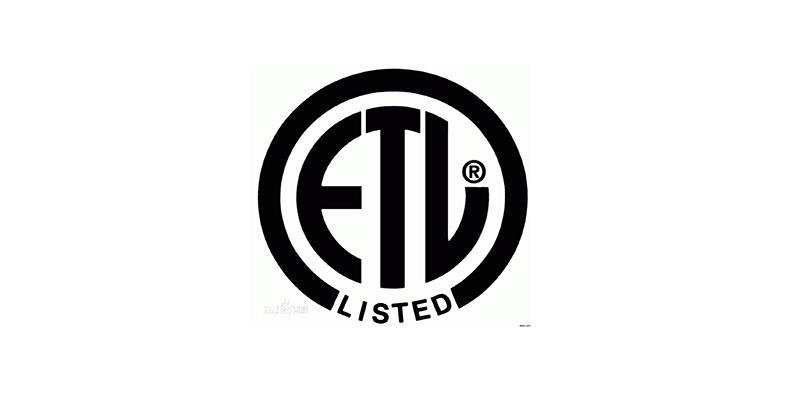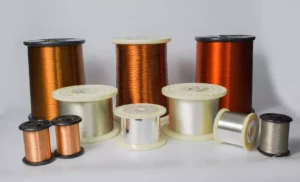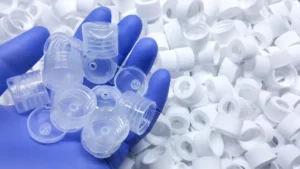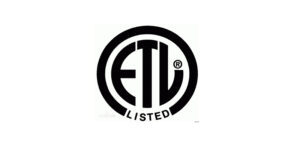Worried about the safety of your electronics?
A faulty product can be a significant risk.
Certification marks provide peace of mind, showing a product has been tested and meets safety standards.
ETL certification demonstrates that a product complies with North American safety standards.
The mark is issued by Intertek, a Nationally Recognized Testing Laboratory (NRTL).
It proves the product passed independent testing based on established safety regulations.
You have likely seen other marks, like the well-known UL symbol.
Are they the same?
Do they mean the same thing?
Understanding what these certifications mean helps you choose safer, more reliable products.
Let’s explore what really goes on behind the label.
What is a Nationally Recognized Testing Laboratory (NRTL)?
Heard the term NRTL but not sure what it means?
This acronym is essential for product safety.
Understanding it helps you trust the certifications you see on everyday devices.
An NRTL is an independent laboratory recognized by the Occupational Safety and Health Administration (OSHA).
Its main function is to provide independent testing and certification for products, especially electrical ones, to confirm they are safe for use in the U.S. workplace.
The NRTL program is a core part of the United States’ safety system.
OSHA, which is part of the US Department of Labor, runs this program to ensure that certain products are safe for use.
When OSHA recognizes a laboratory as an NRTL, it is an official acknowledgment of that organization’s ability to perform product safety testing and certification according to national standards.
These private-sector labs operate independently and are not run by the government.
The Role of an NRTL
The primary job of an NRTL is to test products against the specifications of applicable safety standards.
These standards are often developed by organizations like UL (Underwriters Laboratories) or other standards bodies such as ANSI, ASTM, and CSA.
An NRTL provides the independent, third-party verification that a product meets these requirements.
This process involves:
- Initial Testing: Rigorous examination of a product’s design, components, and construction.
- Certification: If the product passes, the NRTL allows the manufacturer to use its registered certification mark (like the ETL or UL mark).
- Follow-Up Inspections: NRTLs conduct periodic, unannounced visits to the manufacturing facility to make sure the product continues to be made to the same standards as the one that was tested.
This entire system ensures that a certification isn’t just a one-time approval.
It’s an ongoing process of surveillance that confirms products remain compliant over time.
This gives consumers, retailers, and regulatory officials confidence that the product they are buying or inspecting today is just as safe as the day it was first certified.
ETL vs. UL: Is There a Difference?
Confused between ETL and UL labels?
Many people wonder if one is better or safer.
The truth is, they are much more similar than you might think.
When it comes to regulatory approval, there is no difference between an ETL listing and a UL listing.
Both ETL (run by Intertek) and UL (Underwriters Laboratories) are OSHA-recognized NRTLs.
Inspectors and code officials across North America accept both marks equally as proof of product compliance.
The core function of both ETL and UL is to test products against established safety standards.
The services they offer, including testing, listing, labeling, and follow-up inspections, are the same.
The key distinction lies not in the standards they test to, but in their business models and history.
Standard Development
The most significant difference between the two organizations is that UL develops its own safety standards.
UL has developed more than 1,500 safety standards that are used by many other organizations, including ETL, to test products.
In contrast, ETL does not create its own standards.
Instead, ETL tests products against the standards established by UL and other standards-developing bodies like CSA and ANSI.
This means that when ETL tests a product, it is testing to the exact same safety requirements that UL would use.
Market Perception and Service
While both marks are equally valid, there can be a perception in some circles that UL testing is more stringent.
However, it’s important to note that both certifications are respected and require rigorous testing.
Often, a manufacturer’s choice between ETL and UL comes down to business factors.
Some manufacturers choose ETL because they are known for being able to complete the certification process more quickly and at a lower cost than UL.
The quality of customer service and the capabilities of the testing lab are what set them apart.
UL Recognized Components
Another difference is a specific classification offered by UL called “UL Recognized.”
This mark is intended for components that are installed inside other finished and listed devices.
These are parts like power supplies or circuit boards that will be used in a factory environment by technical professionals.
They are not intended for field installation in their own right.
| Feature | ETL (Intertek) | UL (Underwriters Laboratories) |
| NRTL Status | Yes, recognized by OSHA | Yes, recognized by OSHA |
| Develops Standards? | No, tests to existing standards (including UL’s) | Yes, develops over 1,500 safety standards |
| Regulatory Acceptance | Accepted across the US and Canada | Accepted across the US and Canada |
| Core Services | Testing, certification, and follow-up inspections | Testing, certification, and follow-up inspections |
The History Behind the ETL Mark
Does a certification’s history matter?
A long legacy often means trust and experience.
The ETL mark has roots that go back over a century, beginning with one of history’s greatest innovators.
The ETL story began in 1896 when Thomas Alva Edison founded the Electrical Testing Laboratories (ETL).
Edison’s original vision was to provide assurance to consumers by testing products for performance and safety.
This innovative spirit has been part of ETL’s culture from the very beginning.
Edison started the lab as the Lamp Testing Bureau, which was dedicated to testing the safety of lightbulbs.
Over time, the organization expanded its services to test a wider range of electrical components and products for safety.
As its scope grew, the name was changed to Electrical Testing Laboratories to reflect its broader mission.
Today, ETL is the certification division of a global company called Intertek.
Even though it’s part of a larger organization, the letters “ETL” on a product still carry that long history of innovation, influence, and independence that started with Edison.
When manufacturers put the ETL Listed Mark on their products, they are connecting to a legacy of safety and quality that is over 100 years old.
Intertek continues to build on this legacy, focusing on speed and responsiveness to help manufacturers get their products tested, certified, and to market quickly while still maintaining the highest safety standards.
The mark is now found on millions of products sold by retailers and distributors every day.
How Do Products Get ETL Certified?
Ever wonder how a product earns that small safety sticker?
It’s not just a label that’s easy to get.
It is the final step in a detailed and rigorous process designed to ensure safety and compliance from start to finish.
To get ETL certified, a manufacturer must submit its product for testing to confirm it complies with accepted national safety standards.
The complete process also involves initial and ongoing factory inspections to ensure that production continues to meet the same strict standards over time.
The path to certification is a structured journey.
A manufacturer can’t simply send in a product and get a label.
They must engage with the testing lab and meet several key requirements.
For Example: What Does ETL Test on an Electric Fan?
To understand this more concretely, let’s take a household electric fan as an example.
When a manufacturer submits a fan for ETL certification, testers will evaluate its electrical safety, durability, and performance.
This will include a series of rigorous tests.
For example, the lab will check if the fan’s wiring is made of fire-rated materials.
They will also check if the plastic used for the fan’s housing is a self-extinguishing material to ensure it won’t contribute to a fire in case of a fault.
The testing will also assess the electrical safety of the motor and the overall durability of the product to ensure it is safe during normal use.
The path to certification is a structured journey.
A manufacturer can’t simply send in a product and get a label.
They must engage with the testing lab and meet several key requirements.
The Certification Process
Here are the typical steps a company must follow to earn the ETL Listed mark for its product:
- Application and Documentation Submission: The manufacturer first reaches out to Intertek and provides detailed technical documentation about the product. This includes things like schematics, wiring diagrams, lists of materials and components, and user manuals. A product description and photograph or prototype may also be required.
- Product Compliance Testing: The product is sent to an accredited Intertek lab for testing. Here, it undergoes a series of rigorous tests based on the applicable safety standards (such as those from UL or CSA). Testers assess it for electrical safety, durability, and performance. This can include checking that plastics are self-extinguishing and wires are made from fire-rated materials.
- Initial Factory Inspection: Before certification is granted, ETL will visit the manufacturing facility. This initial inspection is to ensure that the factory’s manufacturing processes and quality control systems are capable of producing the product consistently to the certified standards.
- Certification and Authorization to Mark: Once the product passes all tests and the factory inspection is successful, Intertek issues the certification. The manufacturer receives an “Authorization to Mark” certificate and the official artwork for the ETL label. They can then display the mark on their products, often as an adhesive label, a metal nameplate, or an etching.
- Ongoing Surveillance: Earning the mark is not the end of the process. ETL conducts periodic, often quarterly, follow-up inspections of the factory to confirm continued compliance. If a product is ever found to no longer meet the safety standards, it will lose its ETL listing.
Understanding the Different ETL Marks
See different versions of the ETL mark on products?
They are not all the same.
Each variation signifies a specific type of compliance, tailored for different products, standards, and markets.
Intertek offers several different ETL certification marks that are granted based on the product’s design, the standards it meets, and the region where it will be sold.
The most common is the ETL Listed mark for the US and Canada, but there are also special marks for sanitation and performance verification.
Learning to recognize these different marks can give you more insight into what a product has been tested for.
While all relate to safety and compliance, they communicate different things to consumers and regulators.
ETL Listed Mark
This is the most widely seen ETL mark and is the fastest-growing safety certification in North America.
- What it means: The ETL Listed Mark indicates that a product has been tested by Intertek and found to be in compliance with accepted national safety standards.
- Scope: It is specifically designed for products sold in both the United States and Canadian markets. Because the safety laws in these countries are so strict, this certification is also recognized and respected in many other international markets.
- Variations: For products shipping to European Union countries, a version called the ETL-EU Mark is also available.
ETL Sanitation Mark
This mark is focused on products used in food service and other environments where hygiene is critical.
- What it means: The ETL Sanitation Mark certifies that a product complies with all required sanitation measures. It is often used along with the standard ETL Listed mark.
- Scope: It is designed for food, health, and beauty manufacturing sites and equipment used in the U.S. and Canada.
- Requirements: To keep this certification, the manufacturing site must undergo ongoing future testing and inspections focused on sanitation standards.
ETL Verified Mark
This mark is unique because it goes beyond just safety and compliance to include product performance.
- What it means: The ETL Verified mark indicates that a product is not only safe but has also been tested for its effectiveness and performance claims.
- Purpose: It serves two functions: to show the product meets all applicable standards and to act as a point of difference for brands in competitive markets.
- Examples: This mark can be used to verify that cabling products meet certain bandwidth speeds, that dishwashers achieve a certain level of cleaning ability, or that LED traffic signals meet design qualification requirements.
Why is Product Certification Important?
Think safety certifications are just a technical detail for manufacturers?
They are actually crucial for everyone.
These small marks protect consumers, help businesses build trust, and ensure a safer marketplace for all.
Certification is important because it serves as independent proof that products are safe, reliable, and meet accepted national standards.
This verification from a third-party lab like Intertek or UL gives confidence to everyone involved, from the person who makes the product to the person who buys it.
While getting a product certified is not always a legal requirement, it is a critical step for many reasons.
The benefits extend to multiple groups and help maintain a high standard of safety and quality in the market.
For Consumers
The most direct benefit is for you, the customer.
- Safety Assurance: The mark is an assurance that the product has been rigorously tested for safety hazards like fire and electrical shock. For example, tests ensure plastics are self-extinguishing and that fuses work correctly to prevent lethal currents from reaching the user.
- Informed Decisions: It gives you peace of mind and helps you make a better choice when purchasing items, especially electronics or lighting fixtures.
- Quality and Performance: In some cases, like with the ETL Verified mark, it also confirms that the product performs as advertised.
For Manufacturers
For the company that makes the product, certification is a significant investment, but one with major payoffs.
- Market Access: Many retailers and distributors will not sell products unless they are listed with a recognized certification. Municipalities and cities may also require NRTL certification before a product can be sold or installed in their area.
- Liability and Cost: Selling certified products helps protect companies from the high costs associated with unsafe products. It shows they have taken steps to ensure their products are safe.
- Building Trust: Using a trusted mark like ETL or UL shows customers that the company is committed to quality and safety, which builds a trustworthy reputation.
For Regulators and Retailers
Code officials, inspectors, and retail buyers all rely on these marks.
- Proof of Compliance: For an Authority Having Jurisdiction (AHJ) or a local inspector, the ETL or UL mark is immediate proof that a product complies with local and national safety codes.
- Sourcing Confidence: Retail buyers accept the mark on products they are sourcing, making the process simpler and ensuring they are selling safe items to their customers.
Conclusion
In short, ETL certification is a credible and widely accepted indicator of product safety and compliance.
Looking for the ETL mark helps you choose products that have been independently tested to meet high standards for safety and quality.
Frequently Asked Questions
Is the ETL Mark accepted in the US and Canada?
Yes, the ETL Mark is accepted by Authorities Having Jurisdiction (AHJs) and code officials throughout the United States and Canada as proof that a product complies with safety standards.
What is the main purpose of ETL certification?
The main purpose is to show that a product has been independently tested and found to be in compliance with accepted national safety standards.
It provides assurance to consumers and regulators.
Does the ETL Mark mean a product is safe?
Yes, the ETL mark signifies that a product has undergone rigorous third-party testing to comply with established regulations for safety, sanitation, and efficiency.
This process is designed to ensure products are safe for their intended use.
Is getting ETL certification a legal requirement?
It is not always legally required across all industries.
However, many municipalities, cities, and major retailers require certification before a product can be sold or installed, making it a financial necessity for manufacturers.
Who issues the ETL certification?
ETL certification is issued by Intertek, a global testing, inspection, and certification company.
Intertek is an officially recognized Nationally Recognized Testing Laboratory (NRTL) by OSHA.
Do retailers accept products with the ETL mark?
Yes, retailers across North America accept products that bear the ETL Listed Mark.
The mark is featured on millions of products sold by major retailers and distributors every day.
How does ETL test products?
ETL tests products against established safety standards, such as those written by UL.
The rigorous testing includes ensuring plastics are self-extinguishing, wires are made from fire-rated materials, and fuses are present and functional.
Can the ETL mark be used for products sold internationally?
While the ETL Listed mark is specifically for the U.S. and Canadian markets, it is often recognized in other parts of the world due to the strictness of North American standards.
Intertek also offers other international marks like CE and NOM.







